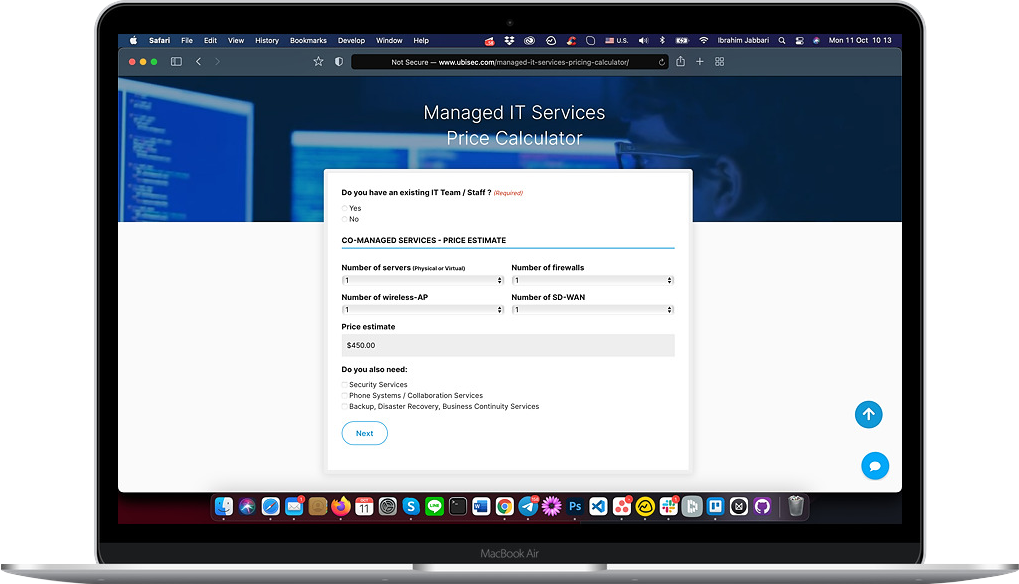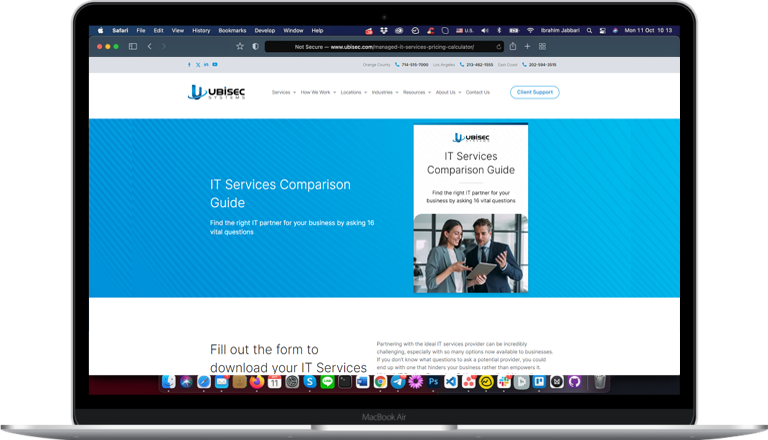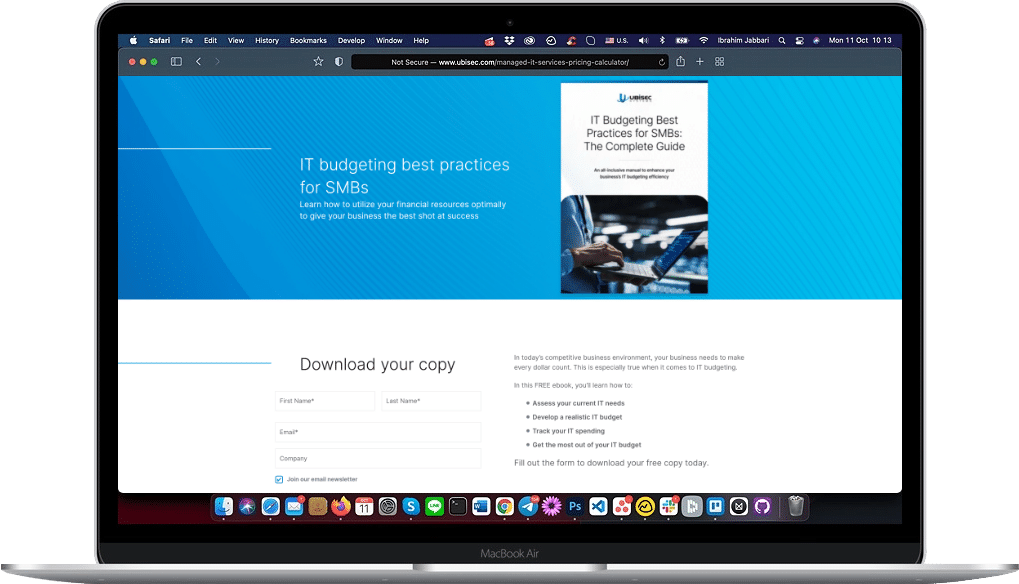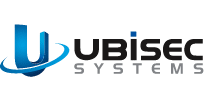In recent years, the landscape of office setups has undergone a profound transformation. Traditional brick-and-mortar offices, once the norm, are now facing increasing competition from remote work setups. This shift has its challenges, however. From limited flexibility to security concerns, traditional office arrangements often need to catch up in meeting the dynamic needs of today’s workforce. Let’s delve into the challenges associated with traditional office setups, explore the benefits of secure remote office solutions, discuss the hurdles in their implementation, and outline steps to integrate them into your business operations seamlessly.
What is a remote access solution?
Remote Access Solutions
In the realm of remote work, access to company networks, applications, and data is paramount. Remote access solutions provide organizations with the ability to connect to corporate resources from any location securely. These solutions come in various forms, including Virtual Private Networks (VPNs), remote desktop services, and cloud-based access platforms.
Remote Access Strategy
Developing a comprehensive remote access strategy is essential for ensuring the security and efficiency of remote work operations. This strategy should encompass protocols for authenticating users, encrypting data transmissions, and monitoring access activity. Additionally, companies must consider factors such as scalability, user experience, and compliance requirements when devising their remote access strategy.
Privileged Access Management
Privileged access management (PAM) plays a crucial role in securing remote access to sensitive company resources. PAM solutions enable organizations to manage and monitor privileged user accounts, limiting access to only those individuals who require it for their roles. By adopting PAM (Privileged Access Management) strategies, organizations can reduce the likelihood of unauthorized entry and potential compromises of sensitive information.
Remote Access Systems
Remote access systems serve as the backbone of secure remote office solutions, facilitating seamless connectivity between remote employees and corporate networks. These systems often incorporate multi-factor authentication, encryption protocols, and access controls to safeguard sensitive data. When selecting remote access systems, companies should prioritize solutions that offer robust security features tailored to their specific industry requirements.
Security Challenges and Risks
Despite the numerous benefits of remote access solutions, they also present significant security challenges and risks. Remote workers accessing company networks from unsecured or public Wi-Fi networks may be vulnerable to interception or cyberattacks. Furthermore, the widespread use of mobile gadgets creates various opportunities for cybercriminals aiming to capitalize on weaknesses. Moreover, guaranteeing adherence to industry standards and laws concerning data security introduces further intricacy to safeguarding remote access.
Security Features to Consider
Industries like finance, healthcare, and legal services must prioritize security aspects when assessing remote access options. Characteristics like comprehensive encryption, robust authentication techniques, and meticulous access controls are essential for protecting sensitive data and ensuring compliance with regulatory standards. Additionally, the ability to monitor continuously and detect threats is vital for promptly identifying and addressing security breaches as they arise.
By addressing these security challenges and leveraging robust remote access solutions, companies can empower their remote workforce while safeguarding their digital assets and maintaining the integrity of their operations. Investing in secure remote access infrastructure is not just a matter of convenience—it’s a strategic imperative for businesses operating in today’s digital landscape.
Need help finding the right IT service provider? Click here to download our IT Services Comparison Guide!
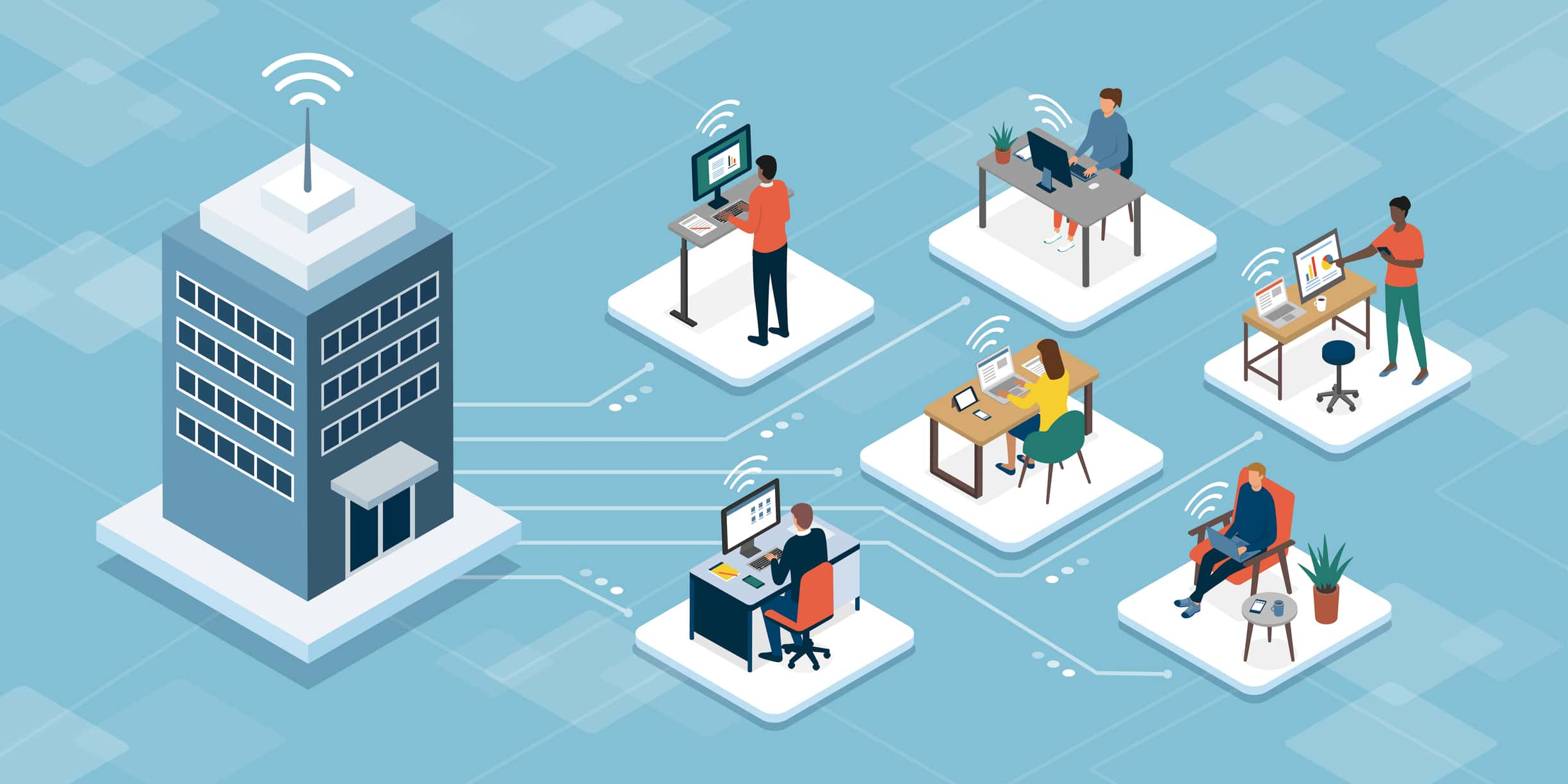
Challenges of Traditional Office Setups:
Limited Flexibility and Mobility:
In traditional office environments, employees are tethered to their workstations, limiting their ability to work from alternate locations. The absence of adaptability can restrict productivity and disrupt the equilibrium between work and personal life.
High Overhead Costs:
Maintaining a physical office entails significant overhead costs, including rent, utilities, and office supplies. These expenses can eat into budgets and restrict resources that could otherwise be allocated to strategic initiatives.
IT Challenges with Remote Work:
Remote work introduces a new set of IT challenges. IT departments must grapple with issues such as ensuring secure access to company networks, managing software updates, and troubleshooting technical glitches for remote workers.
Security Concerns for Remote Work:
Security is a paramount concern in remote work setups. IT departments bear the responsibility of implementing robust security measures to safeguard company data and prevent unauthorized access, all while ensuring seamless connectivity for remote employees.
Managing Remote Workers:
Supervising and managing remote workers poses unique challenges. Traditional management techniques may prove ineffective in a remote setting, necessitating innovative approaches to monitor productivity and foster team cohesion.

Why Use Secure Remote Office Solutions?
Enhanced Security:
Secure remote office solutions employ encryption methods to safeguard sensitive data. Access control mechanisms guarantee that solely authorized individuals can reach company resources, thereby reducing the likelihood of data breaches.
Improved Productivity:
Remote office solutions leverage cloud-based tools and virtual desktops, enabling employees to access work-related documents and applications from anywhere. Unified communications facilitate seamless collaboration, enhancing overall productivity.
Increased Flexibility:
Remote work options attract top talent by offering flexibility and promoting a healthier work-life balance. Employees appreciate the freedom to work from any location, leading to increased job satisfaction and motivation.
Reduced Costs:
Adopting remote office solutions can lead to significant cost savings. Companies can slash expenses related to office space, utilities, and employee commuting, contributing to a more streamlined budget.
Scalability:
Remote solutions offer scalability, allowing businesses to adjust their workforce size and resources as needed quickly. Such adaptability empowers companies to respond to shifting market conditions without being bound by the limitations of physical office locations.

Challenges of Secure Remote Office Solutions:
Security Risks:
While secure remote office solutions enhance data security, they also introduce new risks. IT teams must remain vigilant in monitoring potential threats and implementing robust security protocols to protect against data breaches.
Technology Dependence:
Remote work relies heavily on technology, making reliable internet connectivity and hardware maintenance imperative. Technical glitches can disrupt workflow and frustrate remote workers, highlighting the importance of proactive IT support.
Collaboration Issues:
Due to geographical distances, communication and collaboration within remote teams can pose challenges. Remote workers might experience feelings of isolation, potentially impacting the effectiveness of collaboration compared to in-person teams.
Management Difficulties:
Managing remote teams requires clear communication and performance monitoring strategies. Without proper support, remote workers may experience feelings of isolation and burnout, necessitating supportive management practices.
Are you struggling with creating a remote work environment for your team? Contact us to get started!

Steps to Implementing Secure Remote Office Solutions:
Assess Your Needs:
Identify essential remote office solutions tailored to your team size, security requirements, budget, and work styles. Understanding your specific needs ensures effective implementation and utilization of remote tools.
Research and Choose Solutions:
Evaluate remote office solutions based on user-friendliness, security features, scalability, and support. Selecting the right tools can enhance productivity and streamline operations for your organization.
Implement Technology:
Ensure proper configuration, deployment, user training, and ongoing support for chosen remote office technology. Seamless integration and user adoption are crucial for maximizing the benefits of remote work solutions.
Establish Policies and Procedures:
Develop clear guidelines for data security, access control, remote work expectations, and communication protocols. Establishing robust policies ensures consistency and protects sensitive information across remote teams.
Monitor and Maintain:
Assess security measures regularly, update software, and provide ongoing user support to maintain a secure and efficient remote work environment. Proactive monitoring and maintenance are essential for long-term success.
Conclusion:
The evolution of office setups presents both challenges and opportunities for businesses worldwide. By embracing secure remote office solutions, organizations can overcome the limitations of traditional office arrangements and unlock new levels of flexibility, productivity, and cost-efficiency. With the right strategies in place, businesses can navigate the transition to remote work seamlessly and thrive in today’s dynamic landscape. Take the first step towards a more agile and secure office setup by partnering with Ubisec Systems here. Together, we can shape the future of work.
FAQs:
What is a secure remote office solution?
A secure remote office solution is a set of tools and technologies designed to enable employees to work remotely while ensuring the security of company data and resources.
How much does it cost to implement secure remote office solutions?
The expenses associated with implementing secure remote office solutions fluctuate based on factors like the organization’s size, the selected technology stack, and particular security needs.
What training do employees need to work remotely securely?
Employees need training on topics such as cybersecurity best practices, remote access protocols, and the proper use of remote work tools to work securely from remote locations.
How can I monitor my employees’ activity when they work remotely?
Monitoring employee activity in remote work settings can be achieved through the use of productivity tracking software, VPN access logs, and regular check-ins with team members.


